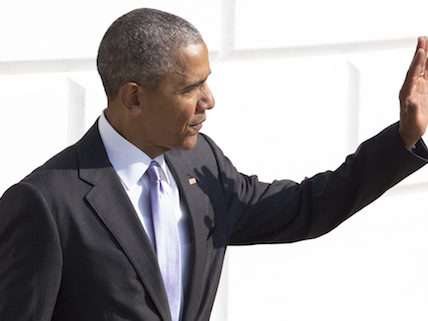The Trillion-Dollar Deficit Question
The bottom line is that we have a spending problem that should be addressed by reforming Social Security, Medicare, and Medicaid.


Have you noticed that for a few months, President Barack Obama has stopped bragging about how the federal budget deficit is shrinking? That's because it's not. For the first time since 2009, the deficit has gone up rather than down.
The Congressional Budget Office recently released its budget review for September 2016. It shows that in fiscal 2016, which ended Sept. 30, the deficit grew by $149 billion, from $439 billion to $588 billion. It now stands at 3.2 percent of gross domestic product, up from 2.5 percent last year. It's also the first increase in the deficit as a share of GDP since 2009.
This year's deficit growth has nothing to do with a loss in revenue. Almost all of the $149 billion added to the deficit came from additional spending. The estimated spending increase was $168 billion, and the estimated revenue increase was $19 billion. The CBO notes that $41 billion of that spending was the result of payments that should have been made in fiscal 2017 but weren't because Oct. 1 fell on a weekend. That being said, CBO adds, it did not make much difference. "If not for that shift, the deficit in 2016 would have been about $547 billion, or 3.0 percent of GDP—still considerably higher than the deficit recorded for 2015."
Putting the deficit figure in perspective is interesting. A $588 billion deficit is more than we spend on the Department of Defense for the year ($564 billion, excluding war funding) and only slightly less than we spend on health care for non-poor Americans' Medicare ($595 billion). If you add Social Security and Medicaid to the Medicare amount, we spent $1.87 trillion on the three largest mandatory programs, which explains why I always stress that these programs drive our future debt.
We are steadily heading back toward a trillion-dollar deficit. CBO projects a deficit of $954 billion by 2022, assuming Congress sticks to the current law and maintains the budget caps, which are supposed to make their comeback in fiscal 2018. But unlike the trillion-dollar deficits we experienced during the Great Recession, this red ink is here to stay—and grow. Of course, the fact that the economy will keep growing at a meek, though steady, 1.9 percent per year will contribute to these worrying trends.
Why should we care? First, these numbers show that the government is constantly growing and expanding its size and scope, a move that will lead to future tax increases or slower economic growth. Second, having higher deficits also means having higher public debt. Federal debt is already high relative to its historical levels. But if current policies remain in effect, the debt held by the public will grow from almost 77 percent of GDP at the end of this year to 150 percent by 2046.
In the long term, if unaddressed, it will have a damaging impact on American families. Higher sustained debt also makes it harder for the government to respond to real emergencies, such as natural disasters and acts of terrorism.
It's frustrating because we know exactly what needs to be done to get off this unsustainable cycle of spending, larger deficits and higher debt levels. Behind the trend is the rising spending on Social Security, Medicare, Medicaid, and net interest. These programs account for a large share of past deficits and will account for an even larger share of future ones. The only solution as such is to reform these programs.
Some will tell you that no reform can be achieved without significant tax increases. However, there are serious side effects from raising taxes in terms of labor productivity and economic growth. It's also very questionable whether Uncle Sam could raise much more revenue with higher tax rates under the current system.
The bottom line is that we have a spending problem that should be addressed by reforming these programs. The good news is that over the years, scholars in different institutions have come up with many plans on how to do just that; the solution is already out there. The bad news is that we're in this situation because of a lack of political power to get us off a path that leads to financial chaos. How we change those dynamics is the trillion-dollar question.
COPYRIGHT 2016 CREATORS.COM
